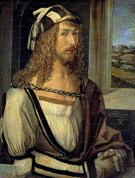Art, Art History and Design, School of
Date of this Version
2004
Abstract
During the first half of the sixteenth century, the earliest visual representations of peasant festivals in European art were produced in Germany. These works, all prints, showcase peasants expelling their drink with the result that art historians today, nearly 400 years later, have described these prints as gross and indecent. In their revulsion and distancing from sixteenth-century Germany’s insistently colorful visual and verbal vocabulary, art historians of Northern European art appear to have stressed both the values and preferences of their own twentieth-century culture and that of the sixteenth-century Netherlands rather than those of the society that produced them—sixteenth-century Germany. This preference for clean peasant festival images, ones that are scatologically free, underscores the art historical preference for Netherlandish art that includes Pieter Bruegel’s paintings and prints of peasant festivals over the German prints, which originated the theme.
Although Germany produced the first images of peasant festivals in European art, it is the later Netherlandish prints and paintings that have been studied and showcased in art historical literature, despite recent studies of the German imagery by Margaret Carroll, Keith Moxey, and myself. The makers of prints turned their skills to images centered around peasants feasting and celebrating first in the form of prints in Germany, at the home of its most celebrated artist, Albrecht Dürer, at Nuremberg, and then a half century later as paintings produced to the north and west in Flanders and Antwerp, with Pieter Bruegel.
In this essay I study the earliest peasant festival imagery that was designed by Sebald Beham at Nuremberg during the 1520s and 1530s. I investigate the imagery produced as large-scale woodcuts, drinking, and related issues within the cultural contexts of Lutheran Nuremberg during the 1520s and 1530s soon after the adoption of Lutheranism in Nuremberg in 1525. I then trace the production of peasant festival images from Nuremberg to Frankfurt am Main, where Beham continued designing peasant festival prints, which he reinvented as small engravings in series published in the late 1530s and late 1540s. Within a few years the subject of peasant festivals, which Beham had invented in Germany, moved to Flanders in the Netherlands where scatology played more minor roles and ultimately none at all by the time Bruegel designed his peasant festival paintings around 1567.
In attempting to understand the changing position of scatology, a number of explanations will be posited including: 1) the conservative effect the Council of Trent had on visual art of the second half of the sixteenth century, 2) the shift from the medium of prints to painting, 3) the civilizing process of Norbert Elias, and 4) the differences in German versus Flemish culture. Although no single explanation convincingly explains the cleansing of scatology from Bruegel’s peasant festival imagery, the insistence on scatology in German art finds far easier explanation than its avoidance or elimination within Netherlandish art. Although further study is needed for a definitive answer to the question why Netherlandish art shied or turned away from scatology, I show here that the German emphasis on scatology is less a gloss added by the artist than a well-thought-out strategy that had deep cultural roots. My essay attempts to show that understanding a culture is important if we are to understand specific sixteenth-century visual imagery.


Comments
Published (as Chapter 10) in Fecal Matters in Early Modern Literature and Art: Studies in Scatology, edited by Jeff Persels and Russell Ganim (Aldershot: Ashgate, 2004), pp. 118-137. Copyright © 2004 Jeff Persels and Russell Ganim. Used by permission.